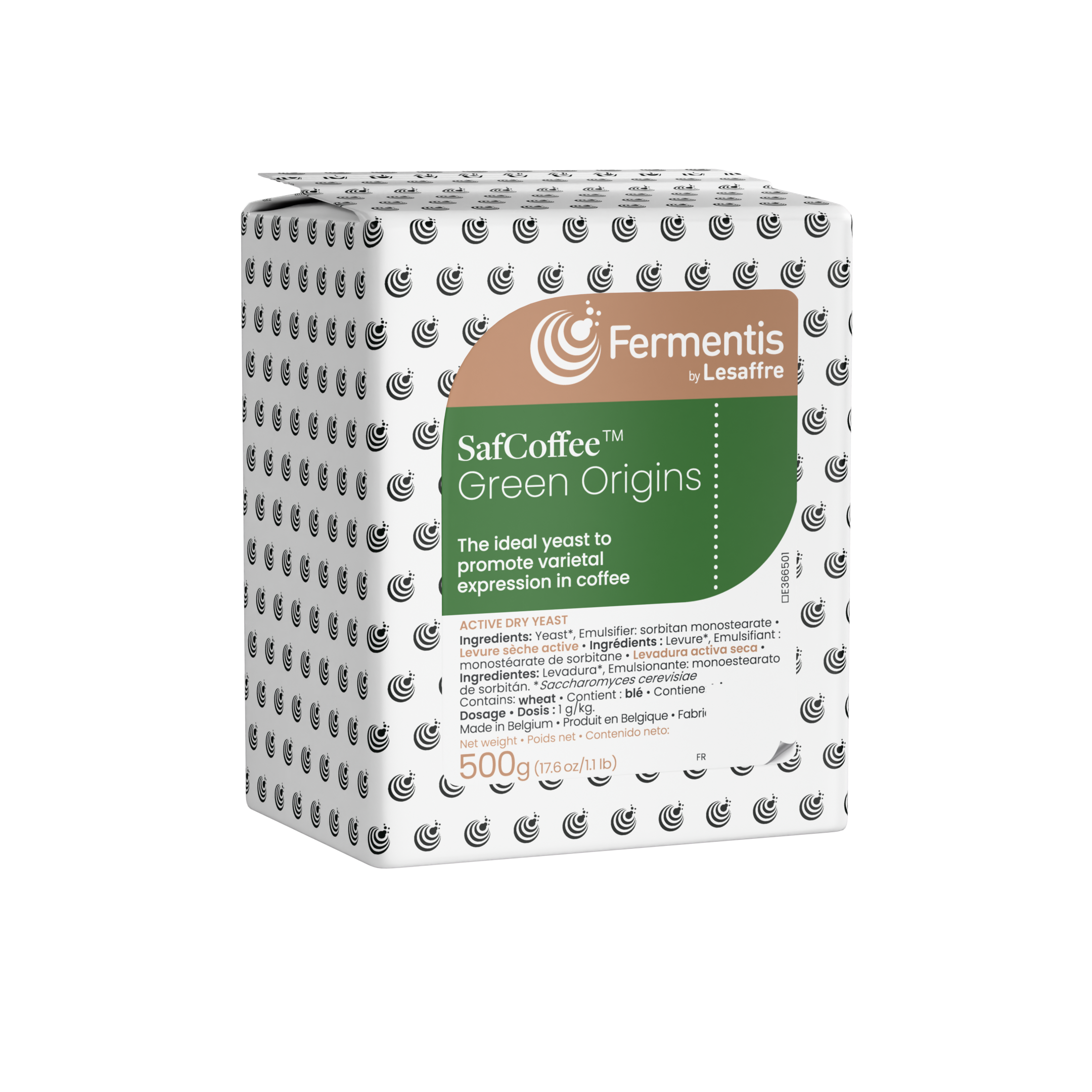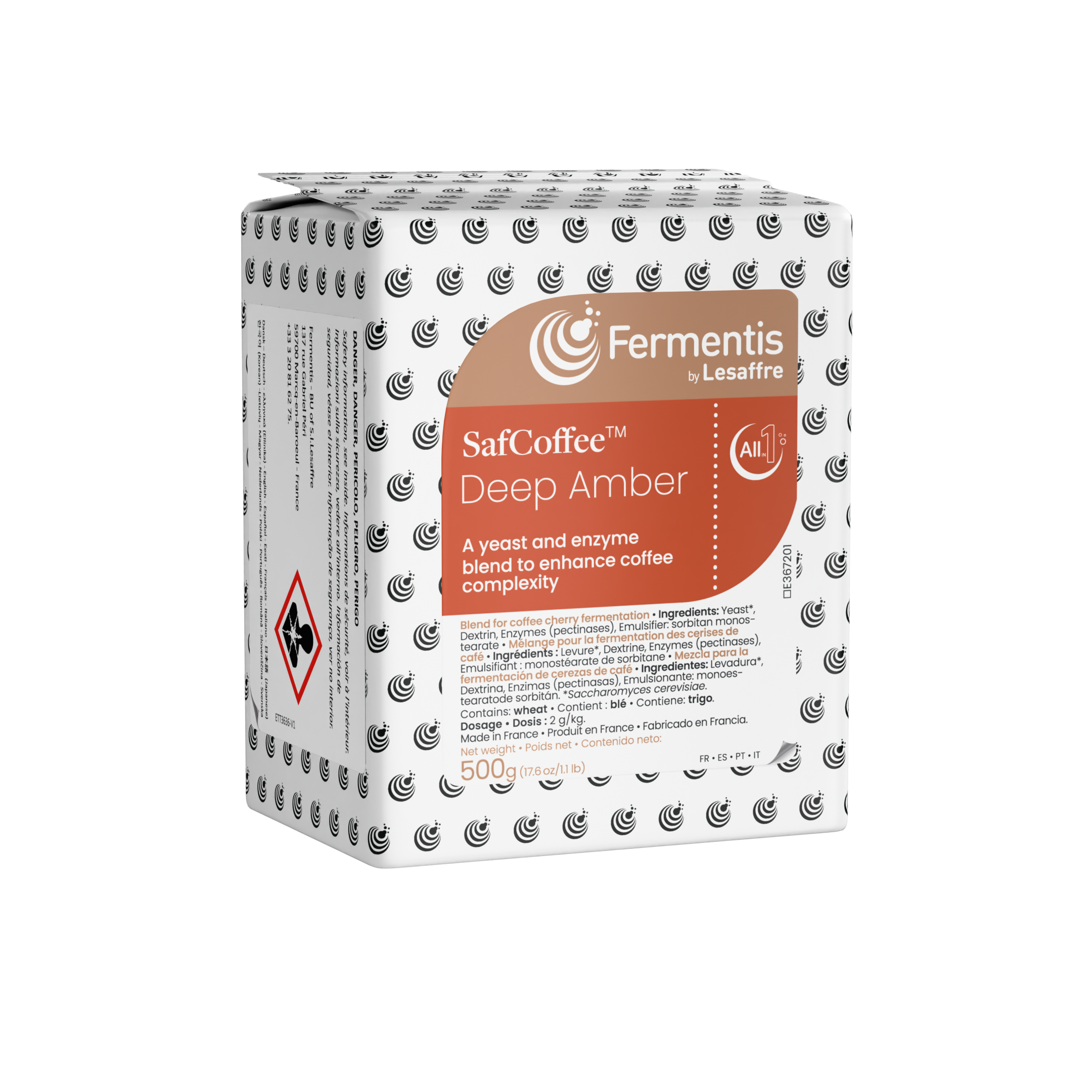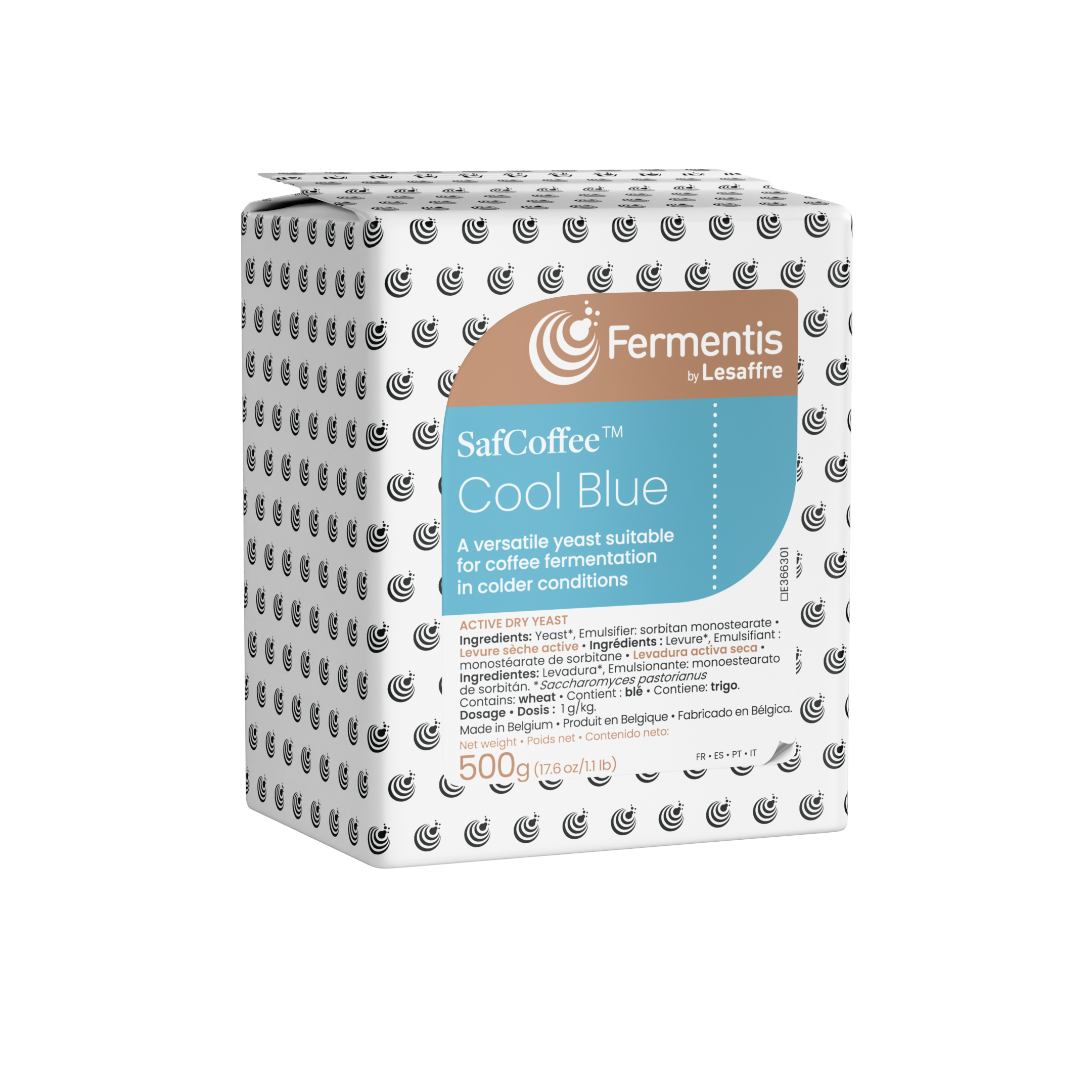FOR SECURED FERMENTATIONS AND SPARKLING WINES
SafŒno™ VR 44 was selected for its excellent fermentation characteristics and its resistance to extreme wine making conditions (Fermentis® selection).
Still White & Red wines. Dosage: 10 to 20 g/hl
Fermentation restart. Dosage: 30 to 40 g/hl
Prise de mousse. Dosage: 15 to 40 g/hl
Ingredients: yeast (Saccharomyces cerevisiae), Emulsifier: E491 (sorbitan monostearate)
SafŒno™ VR 44 sensory features
SafŒno™ VR 44 is convenient for all types of applications even in difficult wine making conditions.
Red wines
Given its fermentations characteristics, SafŒno™ VR 44 allows the production of prestigious red wines fine, neat and with terroir characters (Cabernet Sauvignon, Merlot, Carmenère, Barbera, Sangiovese, Teroldego…).
Prise de mousse
Particularly adapted to secondary fermentation (in bottle under the classic method or in tank), SafŒno™ VR 44 gives excellent results on all types of sparkling wines.
White wines
Ideal for fermentations under controlled temperatures (on Chardonnay, Sémillon, Trebbiano, Malvasia, Pinot Grigio…).
Usage
- Gently pour the desired quantity of yeast in 10 times its weight of tap water at 30-35°C in a wide vessel. Pay attention to cover all the water surface area by creating a thin layer of yeast.
- Leave to rest for 20 minutes.
- Gently stir to complete yeast rehydration while avoiding the formation of lumps prior acclimatization.
- Double progressively the volume of the yeast suspension by adding must from the tank while stirring the mix so that the temperature of the yeast starter decreases and yeast activation starts.
- Leave to rest for 10 minutes.
- Homogenize and incorporate the yeast starter in the fermentation tank during a pumping over with aeration.
SafŒno™ VR 44 technical features
→ Killer character strain, enabling a good settlement and a fast fermentation start
→ Regular and complete fermentation of sugars
→ Fermentation temperature: 10°C to 40°C
→ Alcohol tolerance: 16% vol./vol.
→ Low nitrogen requirements
→ Sugar/alcohol yield: 16.5 g/l for 1% vol./vol.
→ Low production of acetaldehyde (<30mg/L) and SO2
→ Low production of foam
- Lesaffre know-how and continuous yeast production process improvement lead to obtain an exceptional quality of dry yeasts able to resist to a very wide range of use, cold or no rehydration included, without affecting their viability, kinetic and/or analytical profile.Winemakers can choose usage conditions that fit the best their needs, i.e.:
- Direct inoculation: Pour the yeast on the surface of at least 10 times their weight of must (possibly directly on the top of the tank or during tank filling after settling for whites and rosés). Gently stir to avoid or break clumps. Immediately transfer into the tank via a pumping over with aeration (or homogenize tank volume).
- With prior rehydration: Pour the yeast on the surface of 10 times their weight of tap water at room temperature. Gently stir to avoid or break clumps. Wait for 20 minutes and transfer into the tank via a pumping over with aeration.
Packaging
Carton of 20 vacuum-packed sachets of 500g each (Full box net weight: 10 kg).
Carton of 1 vacuum-packed box of 10 Kg (Full box net weight: 10 kg).
Guarantee
The high rate of dry matter of our yeasts assures an optimum storage in its original packaging at a temperature not higher than 20°C (during 3 years) and 10°C for an extended storage (4 years). Fermentis guarantees the product complies with the International Oenological Codex until its Best Before End Date in the storage conditions mentioned above.
Each Fermentis yeast is developed under a specific production scheme and benefits from the know-how of the Lesaffre group, world leader in yeast manufacturing. This guarantees the highest microbiological purity and maximum fermentation activity.
Note that you could find a different yeast classification for this product on our sachets and on older versions of our communication tools.
Indeed, this product was previously classified as Saccharomyces bayanus, but as the taxonomic classification of yeasts is a highly evolutive concept, the most recent edition of ‘The Yeast, a taxonomic study’ made us revise our classification to be aligned with the scientific community.
For sustainable reasons, we made the choice to use our remaining stock of printed sachets before we re-print new ones.
In the meantime, don’t worry if you have already fermented your beverage with this yeast strain, yeast taxonomy classification has no impact on the product characteristics.
The data contained in this technical sheet are the exact transcription of our knowledge of the product at the mentioned date. They are the exclusive property of Fermentis-Division of S.I.Lesaffre. It is of the user responsibility to make sure that the usage of this particular product complies with the legislation.














